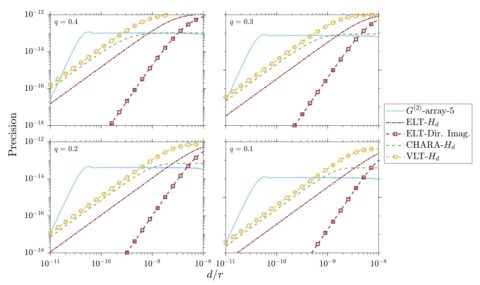A quantitative comparison of amplitude versus intensity interferometry for astronomy published in New Journal of Physics
Our Article A quantitative comparison of amplitude versus intensity interferometry for astronomy has been published in New Journal of Physics:
Abstract
Astronomical imaging can be broadly classified into two types. The first type is amplitude interferometry, which includes conventional optical telescopes and very large baseline interferometry (VLBI). The second type is intensity interferometry, which relies on Hanbury Brown and Twiss-type measurements. At optical frequencies, where direct phase measurements are impossible, amplitude interferometry has an effective numerical aperture that is limited by the distance from which photons can coherently interfere. Intensity interferometry, on the other hand, correlates only photon fluxes and can thus support much larger numerical apertures, but suffers from a reduced signal due to the low average photon number per mode in thermal light. It has hitherto not been clear which method is superior under realistic conditions. Here, we give a comparative analysis of the performance of amplitude and intensity interferometry, and we relate this to the fundamental resolution limit that can be achieved in any physical measurement. Using the benchmark problem of determining the separation between two distant thermal point sources, e.g., two adjacent stars, we give a short tutorial on optimal estimation theory and apply it to stellar interferometry. We find that for very small angular separations the large baseline achievable in intensity interferometry can more than compensate for the reduced signal strength. We also explore options for practical implementations of very large baseline intensity interferometry (VLBII).
